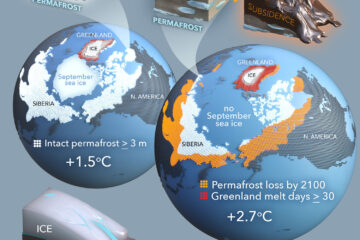A new perspective on ecological prediction reveals limits to climate adaptation in a temperate tree species
Forests absorb a large fraction of anthropogenic CO2 emission, but their ability to continue to act as a sink under climate change depends in part on plant species undergoing rapid adaptation. Yet models of forest response to climate change currently ignore local adaptation as a response mechanism. Thus, considering the evolution of intraspecific trait variation is necessary for reliable, long-term species and climate projections. Here, we combine ecophysiology and predictive climate modeling with analyses of genomic variation to determine whether sugar and starch storage, energy reserves for trees under extreme conditions, have the heritable variation and genetic diversity necessary to evolve in response to climate change within populations of black cottonwood (Populus trichocarpa). Despite current patterns of local adaptation and extensive range-wide heritable variation in storage, we demonstrate that adaptive evolution in response to climate change will be limited by a lack of heritable variation within northern populations and by a need for extreme genetic changes in southern populations. Our method can help design more targeted species management interventions and highlights the power of using genomic tools in ecological prediction to scale from molecular to regional processes to determine the ability of a species to respond to future climates.


